Can Ground Beef Give You Food Poisoning
Foods Most Likely to Give You Food Poisoning
Medically Reviewed by Kathleen M. Zelman, MPH, RD, LD on July 15, 2020
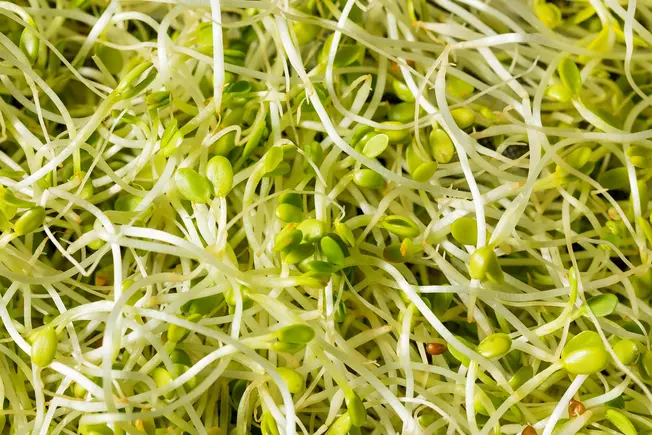
Sprouts
1/12
They're seeds that have sprouted. Raw and lightly cooked sprouts, especially clover and alfalfa, have caused multistate outbreaks of food poisoning every year since 2006. The same warm, humid conditions that nurture sprouts also promote salmonella, listeria, and E. coli. You might be tempted to toss these antioxidant-packed seedlings fresh into salads and sandwiches. But it's safer to cook the sprouts first. Washing won't kill the germs.

Raw Milk
2/12
It's one of the most dangerous sources of foodborne illness and is illegal in some states. It's milk from animals that hasn't been heated, or pasteurized, to kill bacteria. Raw milk can harbor E. coli, listeria, campylobacter, and salmonella. They can cause diarrhea for days, vomiting, and serious illnesses like Guillain-Barré syndrome that can lead to paralysis. Check your milk container to ensure it's pasteurized, especially at farmers markets.
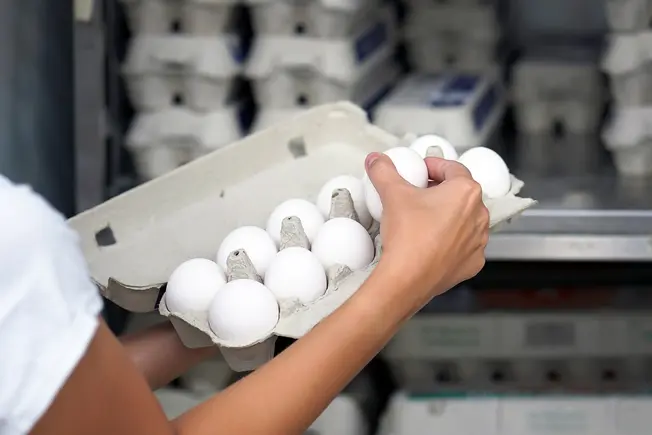
Eggs
3/12
Annually, salmonella-tainted eggs cause 79,000 U.S. cases of food poisoning and 30 deaths. Chickens can pass salmonella to eggs before the shell forms. Bacteria can also infect eggs through poultry poop. Refrigerate eggs at or below 40 F. Some products and recipes call for uncooked eggs. Use pasteurized eggs (they're hard to find) or DIY by dunking eggs in 140 F water using sous vide for at least 3½ minutes. The eggs may thicken slightly.

Flour
4/12
You probably wouldn't dip a spoon into raw flour and eat it. But what about cookie dough or cake batter? It's rare, but raw flour can be contaminated with E. coli during harvesting, grinding, and sifting. Bleaching flour won't kill E. coli, which can cause bloody diarrhea, vomiting, and even kidney failure and death. Boxed cake mixes and prepared cookie dough also can harbor germs.
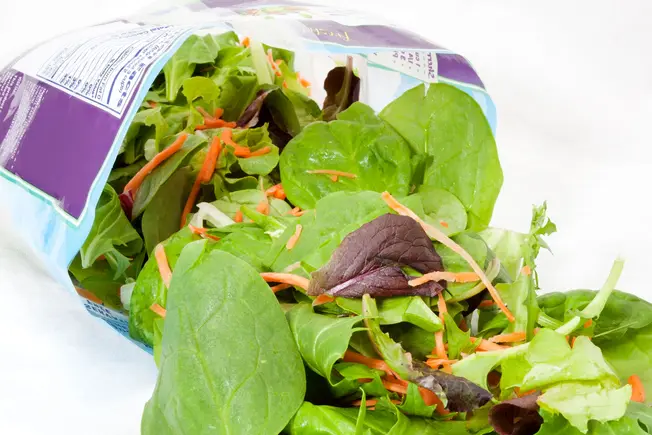
Bagged Lettuce
5/12
Fresh salads are another top source of food poisoning. But pinpointing the cause can be tricky. Some outbreaks are tied to a specific kind of greens, often romaine lettuce and spinach, or to certain growers or packers. Salmonella and other bacteria can be traced to dirty irrigation water, soil, or human hands. Germs multiply in the juice from cut leaves and can get trapped inside the bags. They can cling to the leaves even after washing.
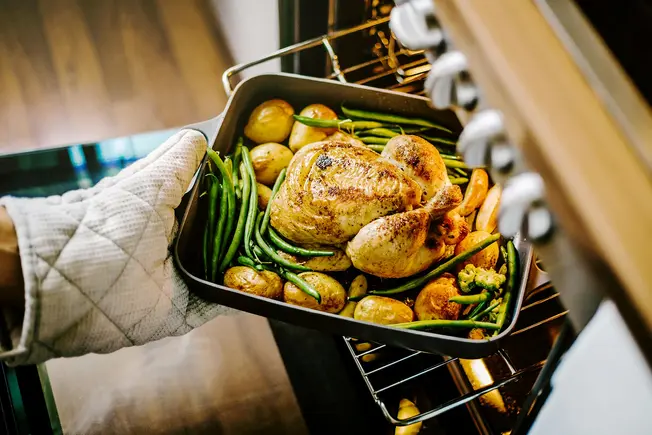
Chicken
6/12
This poultry is America's No. 1 choice of meat. And every year, about a million of us get sick after eating chicken. Like all animals, chickens have bacteria in their gut. Pathogens such as campylobacter and salmonella can get on the birds during processing and packaging, and go all the way to your cutting board and utensils. Don't wash raw chicken because it can contaminate your kitchen. Cooking to proper temperature kills bacteria.
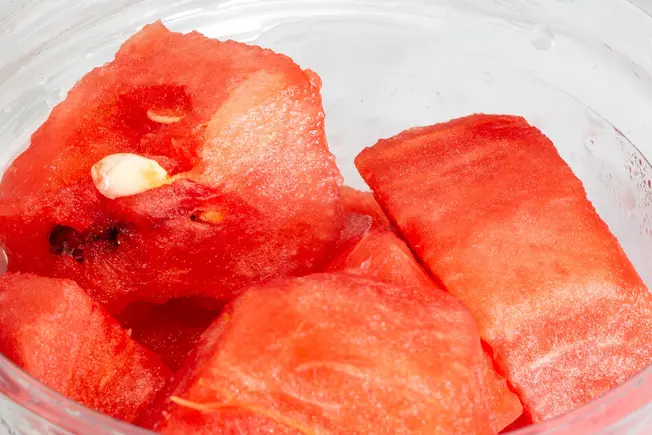
Pre-cut Melon
7/12
Every year, 1.35 million people in the U.S. get salmonella. Nearly 27,000 are hospitalized. Infections are more common in the summer, when more of us enjoy watermelon, cantaloupe, and honeydew melon. The vines grow on the ground, where the rinds can pick up germs. Their surface can be hard to sanitize. Pre-cut melon can pass on norovirus, listeria, and other harmful agents. Washed, whole melons are best. Refrigerate pre-cut fruits or pack them in ice.

Oysters
8/12
Slurping fresh oysters right out of the shell can be a briny treat. These mollusks draw food from coastal waters through their gills. They trap viruses and bacteria the same way. Eating tainted raw oysters can give you vibriosis, which causes diarrhea, vomiting, fever, and chills in more than 80,000 Americans every year. You also can catch norovirus, sometimes called "stomach flu." The only safe way to enjoy oysters is to cook them.

Raw Milk Cheeses
9/12
Easting soft cheeses made with raw milk is much riskier than pasteurized cheeses. You're 160 times more likely pick up listeria with queso fresco, feta, brie, Camembert, and blue-veined varieties such as Roquefort. Listeria can spread beyond your gut and cause headaches, loss of balance, and convulsions. It also may lead to miscarriage, stillbirth, or premature delivery. And your newborn can catch listeria from you.
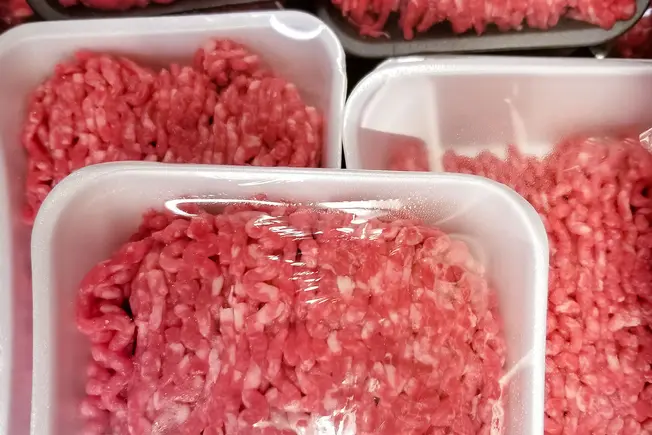
Ground Beef
10/12
E. coli became a household name in the early 1990s, when more than 700 adults and kids fell ill from undercooked hamburger patties sold by a fast-food chain. Four people died. E. coli remains a mainstay culprit behind food poisoning outbreaks. The bacteria is inside humans and animals naturally. Cook steaks and roasts to 145 F on the inside. Ground beef and pork need to reach 160 F to be safe.
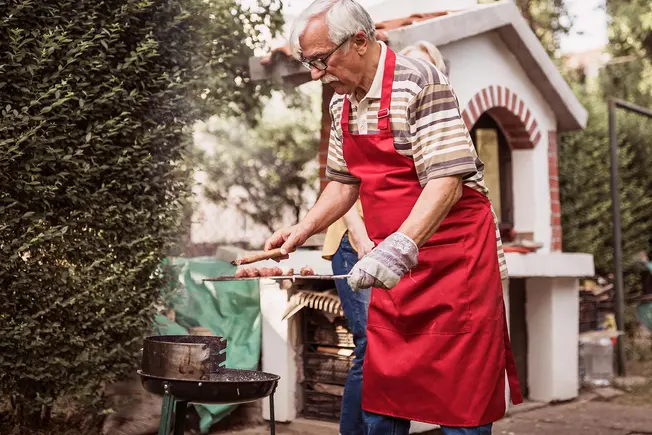
Hot Dogs
11/12
These ballpark staples are precooked. Americans eat a whopping 20 billion of them each year. But they can pick up listeria after they've been packaged. To avoid illness, hot dogs should be just that: hot. Always reheat before you eat.

Invisible Threat
12/12
You can come down with food poisoning from 20 minutes to 6 days after your meal. The last thing you ate isn't always what got you sick To avoid foodborne illness, take it seriously. It sends 128,000 people to the hospital every year. Wash hands and surfaces often, separate foods to avoid cross-contamination, and keep hot food hot and cold food cold. You can't see or smell germs and viruses the same way you see or smell spoiled food.
IMAGES PROVIDED BY: SOURCES: Show Sources
1) Getty
2) Getty
3) Getty
4) Getty
5) Getty
6) Getty
7) Getty
8) Getty
9) Getty
10) Getty
11) Getty
12) Getty
CDC: "List of Selected Multistate Foodborne Outbreak Investigations," 'Foods That Can Cause Food Poisoning," "Vibrio Species Causing Vibriosis," "Norovirus," "Say No to Raw Dough," "Salmonella and Eggs," "Raw Milk Questions and Answers," "Raw (Unpasteurized) Milk," "Raw Milk: Know the Facts," "Listeria (Listeriosis)," "Chicken and Food Poisoning."
Colorado Integrated Food Safety Center of Excellence: "Sprouts."
National Health Service (U.K.): "Sprouted Seed Safety Advice."
National Ocean Service: "What is a bivalve mollusk?"
New York State Department of Health: "Vibriosis Fact Sheet."
FDA: "What you Need to Know About Egg Safety," "The Dangers of Raw Milk: Unpasteurized Milk Can Pose a Serious Health Risk," "Fact or Fiction from Food Safety for Moms to Be."
Mitzi Baum, CEO, Stop Foodborne Illness, Chicago.
Applied and Environmental Microbiology: "Salad Leaf Juices Enhance Salmonella Growth, Colonization of Fresh Produce, and Virulence."
UC Berkeley School of Public Health: "How Safe is Your Bagged Salad?"
University of Florida Health: "E coli enteritis."
National Institutes of Health: "Epidemiology of Escherichia coli O157:H7 Outbreaks, United States, 1982-2002."
Mayo Clinic: "E. coli."
FoodSafety.gov: "Salmonella and Food."
Food and Agriculture Organization of the United States: "Microbiological hazards and melons."
University of Wisconsin-Madison Food Safety & Health: "Safety of Cantaloupe."
National Hot Dog & Sausage Council: "Hot Dog Fast Facts."
United Egg Association: "International Egg Pasteurization Manual."
Source: https://www.webmd.com/food-recipes/food-poisoning/ss/slideshow-food-poisoning-most-common-foods
0 Response to "Can Ground Beef Give You Food Poisoning"
Postar um comentário